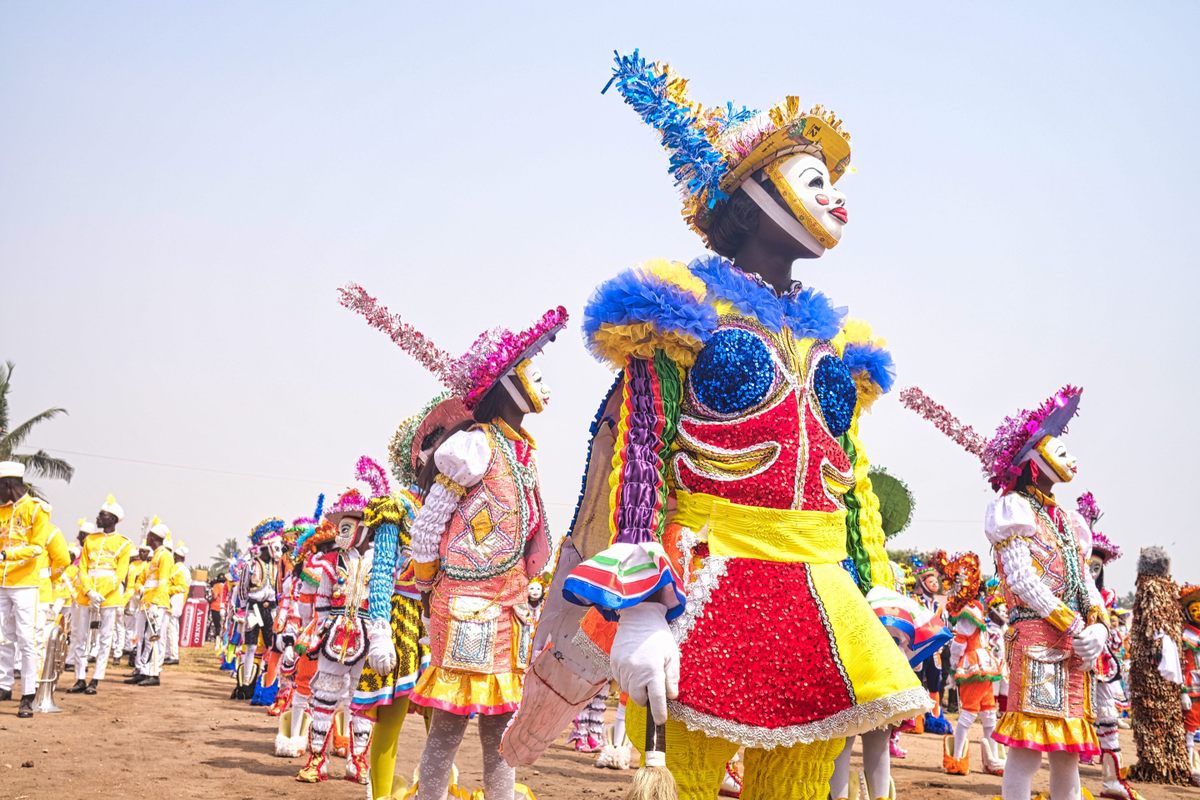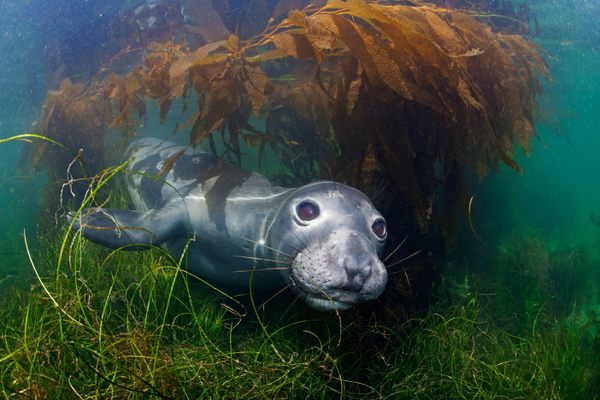
A Year of Ethereal and Illuminating Photographs
Places and cultures glow and shine around the world in some of our favorite Atlas Obscura shots.
Fluorescent tentacles, fiery flames, candid facial expressions—images can pack paragraphs of luminous awe into single frozen moments. Though we at Atlas Obscura love explaining marvels from around the world, sometimes you just have to see them for yourself. Luckily, when we catch the whiff of wonder, our Visuals Editor Winnie Lee finds an international photographer at the ready, armed with a camera, serendipitous lighting, and a good eye. Whether in a small Wisconsin town or an ancient site in Nepal, here are our favorite moments from the year when our shooters shined a spotlight on obscure traditions, dim depths, and the darkest skies.

How to Recreate the Deepest, Darkest Ocean
by Kevin McLean
Sunlight penetrates the ocean only about 650 feet down. After that, it is a world of darkness: the twilight zone and midnight zone. Needless to say, humans don’t normally see what goes on in this pitch-black abyss. The Monterey Bay Aquarium in California decided to change that. Their team of expert aquarists went through the difficult task of recreating the bottom of the ocean in the Into the Deep exhibit, to shine very dim light on sea creatures that are translucent, bioluminescent, or otherwise strange to us. It was just enough light in the darkness for photographer Helynn Ospina. “The Japanese spider crab, whose legs span up to 12 feet, seems like something out of a sci-fi film,” she says. Ospina’s gorgeous, X-ray-like images allow us to peer into unknown, watery depths.

How This Tiny Mexican Town Has Saved Their Monarch Butterflies—For Now
by Vanessa Freije and Yolotzin Hernandez
Indigenous people in Mexico have long believed that monarch butterflies carry the souls of the deceased. Thousands of the fluttering insects migrate to San Miguel Atlautla in October and November, and therefore play a role in local Dia de los Muertos beliefs. But populations have been dwindling and sightings fading. That’s why the Atlautla Monitoring Brigade created a sanctuary in an old volcano crater, to prevent deforestation and help protect the butterfly colonies. Just as the previous migration cycle was about to end, Enrique Barquet rushed over with his camera. His images helped capture the brigade’s important work—along with dozens of marigold-and-black wings, speckled with white and glowing in the sunlight.

In Ghana, the New Year Starts With a Fancy Dress Masquerade
by Line Sidonie Talla Mafotsing
In Ghana, a masked festival with Mardi Gras–like energy rings in the New Year. The festivities were reclaimed by locals from Dutch colonizers in the 1930s, and have been proudly booming down the streets—marching bands and all—for nearly a century. Each time, masquerade troupes compete by putting on elaborate, rehearsed group performances. Photographer Rodney Quarcoo highlights the colorful celebrations with candid moments of preparation and anticipation, and flurries of movement. Browse through the high kicks on stilts, sparkling glitter, and so, so many ruffles.

To Banish Winter in This Tiny Wisconsin Town, Burn a Swiss Snowman
by Tea Krulos
If you’re the sadistic type who likes to watch snowmen melt, you’ll be thrilled to see one straight-up lit on fire. That’s exactly what they do in New Glarus, Wisconsin, a town full of Swiss heritage and architecture. Meant to help predict how long winter will last, the burning of the Bӧӧgg tradition comes from Switzerland, and Wisconsonites have fully embraced the tradition of stuffing a snowman’s head (stuffed with straw, not made of snow) with fireworks and lighting a match. “I’m excited to watch a snowman burn!” said photographer Brianna Griepentrog. And so she did. Griepentrog’s work expertly features the festivities, the smoky blaze, and the moment the head actually explodes. Most importantly, you can see crowds drink the local wine and eponymous beer as the smiling face goes up in flames.

The Lost Waters of Kathmandu Are Needed Now More Than Ever
by Tulsi Rauniyar
It took writer and photographer Tulsi Rauniyar a few weeks to wait out monsoon rains and build relationships with the locals, but finally she was able to safely and authentically access Nepal’s ancient fountains known as hitis. Throughout the country, these durable spouts have been providing water to people for over 2,000 years. The hitis were made with natural processes in mind, and frogs and snakes were often used to clear blockages in the drains and conduits. But with urbanization, many of the old spouts fell to disuse, as more towns brought in modern, piped water systems that require more maintenance and don’t last nearly as long. As Nepal faces water scarcity, many are turning to the old ways. Rauniyar captures the beauty of old stone work, statues surrounded by greenery, flowing streams, and communities gathering to celebrate a life-giving resource.

Our Second Summer Snaps Photo Contest Winners: Night Views
by Winnie Lee, Visuals Editor
“My heart is in Lake Superior,” said photographer Katie Steig. Though she lives elsewhere, Steig made the trip to Hovland in Minnesota at just the right time. Thanks to clear skies and her excellent camera skills, Steig was able to capture a shot of the Milky Way lit up in astounding clarity over The Rock, a tree-covered islet in Lake Superior. She even caught the track of an Iridium satellite in the shot. Steig took third place in our second Summer Snaps photo contest, where the theme was night skies. See the whole selection to witness all the ways stars can pop against the darkness from various corners of the world. (And check out our other Summer Snaps winners in the road trip and wildlife categories.)



















Follow us on Twitter to get the latest on the world's hidden wonders.
Like us on Facebook to get the latest on the world's hidden wonders.
Follow us on Twitter Like us on Facebook